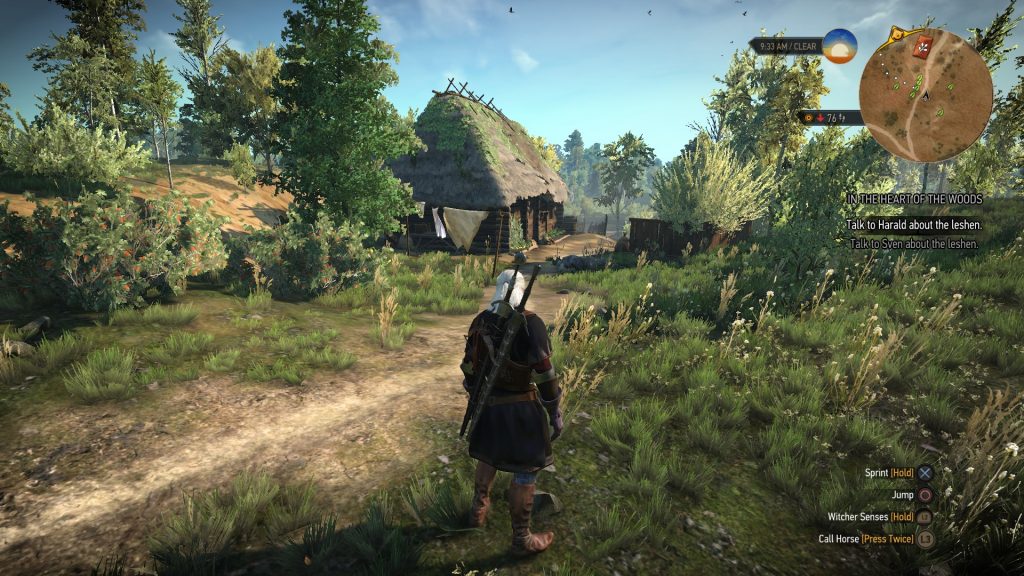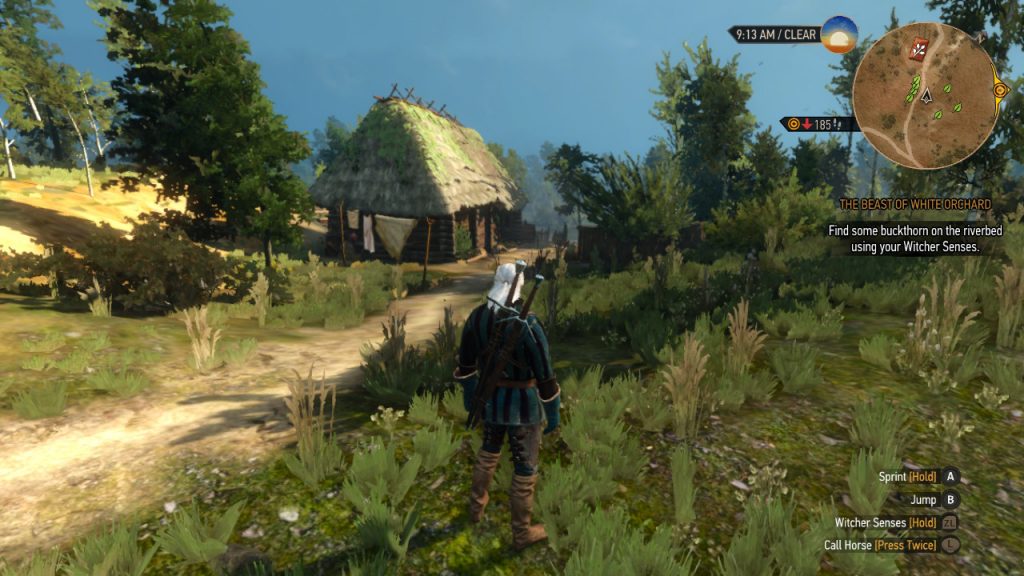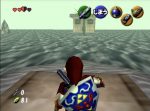The Witcher 3: Wild Hunt is probably one of my favourite games of all time. Not only does it have a rich universe, it still holds up as one of the best looking titles of this generation. So when rumours started swirling of a Switch port earlier this year, I was skeptical.
Sure, other current generation games had been ported to the handheld, with good results. Most notably Doom 2016 and Hellblade. But The Witcher? How could such an utterly massive game run on hardware that’s barely more powerful than the Xbox 360, while keeping all its content intact.
Well, they somehow managed to pull it off. All be it with mixed results. Now, Witcher 3 is one of the few games I do own across multiple platforms. So it’s interesting to compare how it stacks up to the PS4, and the definitive PC version. Obviously they cannot really be compared at all.

PC low settings 
PC ultra settings
So here we have the herbalist’s cabin in White Orchard, running on PC at 1080p on both low and ultra settings. Both modes offer a relatively dense environment that looks clean and crisp. Even lower end gaming rigs should get some decent visuals out of this title, while still maintaining good frame rates. Spec wise, I’m running this on an AMD Ryzen 7 1700, 16GB DDR4-3200, and a Radeon RX 480 4GB overclocked to 1306 MHz. Even on Ultra with HairWorks enabled, I’m still getting a fairly consistent 60fps out in the open country. You can expect similar performance on the Xbox One X.

Switch Docked 
Switch Handheld
And we have the same scene running on the Switch in both docked and undocked mode. A lot of the foliage is missing from both of these modes compared to PC, and the textures are quite muddy. According to tests done by Digital Foundry and other reviewers, Switcher runs at a dynamic 540p in handheld, and 720p when docked, with a frame rate of 30fps for both.
It’s quite obvious that the Switch is being pushed to its absolute limits here. Handheld mode takes the biggest hit. The heavy use of dynamic resolution can make it look like someone rubbed Vaseline on the lens at points. Frame rate also tends to suffer, with occasional drops into the low 20s that can a bit jarring. However, docked mode does tend to stick to a stable 30fps. I’m not far enough in the game yet to see how it handles Novigrad though, which is a location even current gen consoles struggle with.
That said, even though a lot of the ground scrub has been removed, the environment is still dense with trees and objects. Especially if you compare it to similar Switch games like Skyrim and Breath of the Wild, which are relatively sparse by comparison. The game also keeps its dynamic weather and physics engines, which allow objects to react in the wind much like they do on more powerful platforms. Lighting effects have mostly been kept intact as well. CD Projekt and Saber Interactive have certainly worked some miracles here to get the game looking as good as it does.
I think that pretty much sums up my feelings towards these Switch ports in general. They are very impressive from a technical standpoint. They shouldn’t even be possible. However, here we are, with a massive game designed for current high performance systems, that’s running on a device you can play on the bus.
So, should you buy it? Well, that really depends on your expectations here. If your only gaming system is a Switch, you should definitely treat yourself to The Witcher 3. People aren’t kidding when they say it’s one of the best games of all time. However, it is cheaper and will look substantially better when played on other platforms. So if you have access to an Xbox One, PS4, or gaming PC, that’s the version you want. $60 USD is a lot to ask for a downgraded game that came out almost 5 years ago. Now, if you’re just looking to play in handheld mode, you’d be hard pressed to find a bigger, deeper game on the go. That alone makes it worth it, but I’d probably wait for a price drop first.




